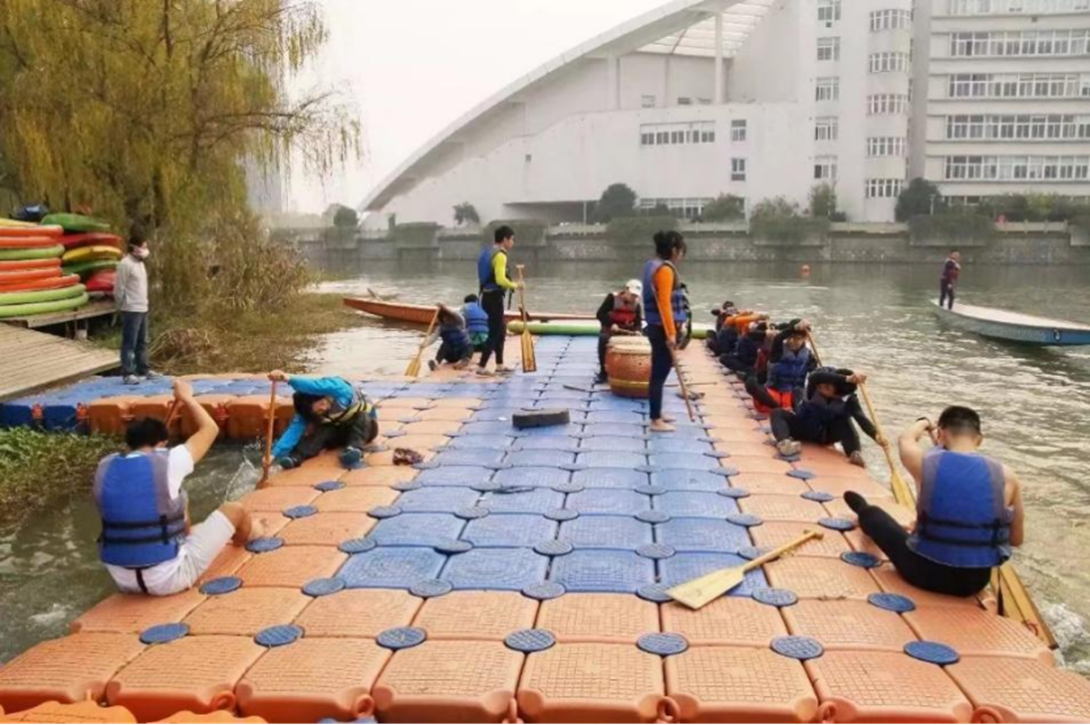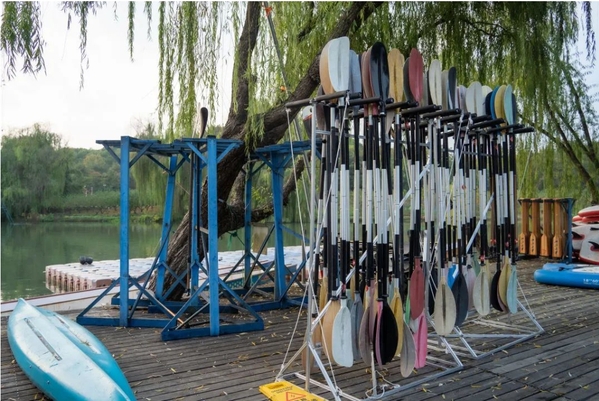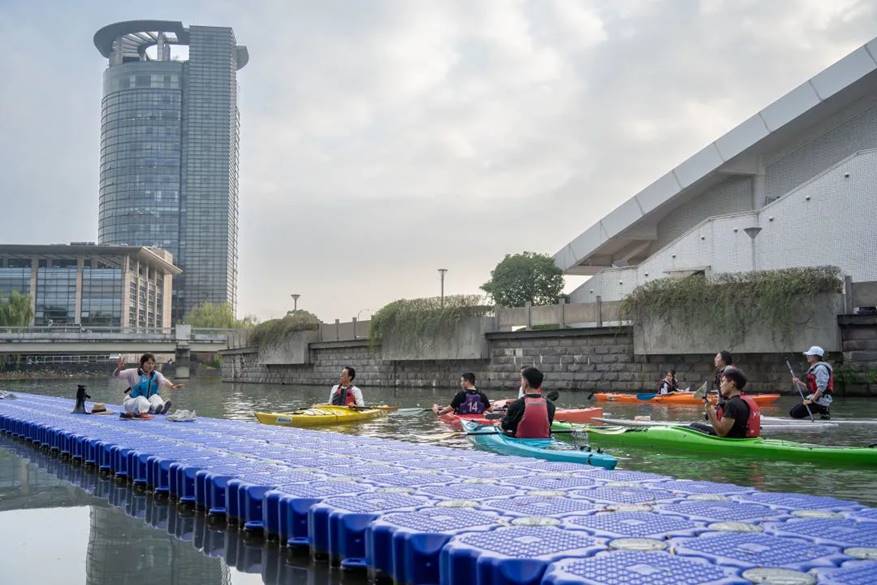The Rising Tide of Water Sports: Boosting Enthusiasm Around the World
Over a decade ago, when a group of ZJUers built the first boat on campus and sailed it on the Qizhen Lake, they might not expect that just several years later, the boats, the floating bridge and the docks would all be equipped here. Today let’s spotlight on water sports in Zhejiang University, to see how the rising tide of water sports lifts the fans’ enthusiasm.
A floating bridge built overnight
How long does it take a team to turn hundreds of bridge kits into a floating bridge? The answer is one night. As the night descended on Zijingang Campus, the water sports enthusiasts dived into the task of bridge building. Hundreds of float boards were stacked on the van to be unloaded. Along the way were the students shuttling back and forth between the van and the dock.

The float boards were square, but their edges were irregular and uneven, adding much difficulty to the manual transport. “They are heavy and hard to grip,” said the student in the transport team. “But we take it as a strength trainingexercise to hone our arm muscles. If we can’t carry them, we push or pull them”

At the same time, the splicing team was busy on the dock – merging float boards, installing nails, twisting screws, and pushing the float boards into the water with high efficiency and fast speed. The sequence of actions became more and more proficient, and their cooperation became increasingly tacit.

In less than three hours, the new bridge debuted on the Qizhen Lake, ready for the final safety inspection. It resembles a brilliant ribbon, flying its way from the dock to the library.

“What is strengthened is more than a dock, but also the friendship among every member of the Water Sports Club. With this new bridge, we can row against the currents in the same boat more smoothly,” said MO Ziyan, president of ZJU’s Water Sports Club.
“In the process of transporting and assembling the kits, the students displayed remarkable resilience,” said XU Yaping, deputy director of the Zhejiang University’s China Water Sports Development Center.
ZJU’s first kayaking class
Recalling the history of ZJU’s water sports, XU expressed a sense of achievements. The first kayaking class on ZJU campus can be traced back to 2014. “At that time, we didn’t have a dock, so our classes were held by the lakeside. Rainy days proved particularly arduous, as the soil would cling to our shoes and boats, creating challenging teaching conditions,” XU said. More than a year later, the University built a dock for the kayaking course, which was officially put into classroom use on March 31, 2016.

Over the past seven years, ZJU’s water sports offerings have expanded significantly. A diverse array of courses now includes Dragon Boat, Paddleboard, Paddleboard Yoga, Kayak Polo, Open Water Safety and Rescue, among others. With an increase in both the number of classes offered and student participation, the need for expanding the dock became apparent.
This expansion was undertaken to provide all students with a more comfortable, safer, and more efficient environment for water sports. The new design allows students to line up, promoting better balance while facilitating closer supervision by instructors. This enhancement not only enriches the curriculum but also enhances overall teaching quality.
The ever-lasting craftsmanship
Back in 2011, some students, fueled by their love for water sports, built and donated a fully functional boat to the University. Crafted meticulously in a dormitory attic, the boat passed safety checks for lake use. Although it no longer sails, it symbolizes their unwavering spirit. “This is the shipbuilding spirit, not only the love for water sports but also the willingness to turn that passion into practiceby investing time and energy for discovery and creation,” XU remarked.

This spirit has extended into every step of ZJU’s water sports. With the introduction of various water sports courses and the formation of different sports teams, the use of sports equipment has increased in both frequency and quantity. Managing and maintaining these assets used to be a challenging task.

When storage shelves were unavailable, students took matters into their own hands. The racks for storing paddles on the dock, for instance, were designed and crafted by students themselves. Some are wooden, coated with blue paint and made by students from years past, now used to hold dragon boat paddles. Others are aluminum structures stabilized with ropes, a collaborative effort by students taking the Intermediate Kayaking course.

“Rowing shells are primarily constructed from carbon fiber composite materials. They are prone to damage in the event of a collision, and repairs can be time-consuming and costly. In cases of minor malfunctions, we attempt to fix them themselves,” said BA Chaofeng, vice president of ZJU’s Water Sports Club. Some veteran team members have even self-taught the structure of rowing shells.

Each year, members of the Water Sports Club organize collective boat cleaning activities. A group of about a dozen individuals is responsible for each boat, working diligently for about half an hour to rejuvenate the entire vessel. Truly, with endeavor, cooperation and enthusiasm as the ingredients, the bridge to creation can always be perfectly constituted.

